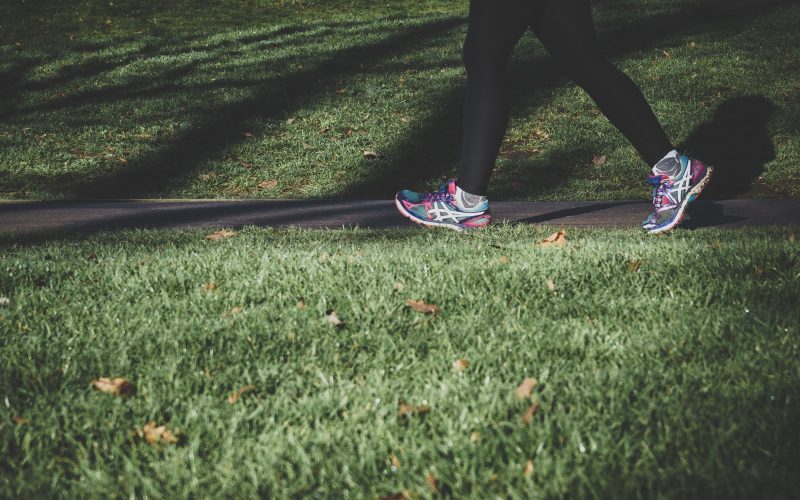Introduction
Are you looking for an exercise routine that is easy on your joints, doesn’t require any equipment, and can be done almost anywhere? Look no further than walking! This simple yet effective form of exercise has numerous health benefits for both your body and mind. In this blog post, we’ll explore how regular walking can improve your physical and mental well-being, making it the perfect addition to anyone’s fitness routine. So lace up those shoes and let’s get moving!
How Walking Can Improve Your Physical Health
There are plenty of reasons to walk more, and improving your physical health is one of them. Walking is a low-impact form of exercise that can help you maintain a healthy weight, improve your cardiovascular health, and strengthen your bones and muscles.
Walking is also an easy way to get started on a fitness routine. If you’re looking to increase your activity level, walking is a great place to start. And if you’re already active, adding more walking to your routine can help you see even more health benefits.
Here are some specific ways that walking can improve your physical health:
1. Weight management: Walking can help you maintain a healthy weight or lose weight if you need to. It burns calories, which can help you create a calorie deficit if you’re trying to lose weight. And since it’s low impact, it’s gentle on your joints and muscles, making it a good option for people who are overweight or obese and want to start exercising without putting their bodies under too much stress.
2. Cardiovascular health: Walking is great for your heart health. It gets your heart pumping and blood flowing, which can help reduce your risk of heart disease. It can also lower blood pressure and cholesterol levels, both of which are important for maintaining a healthy cardiovascular system.
3. Bone and muscle health: Walking can help strengthen bones and muscles, which is especially important as we age. The
How Walking Can Improve Your Mental Health
It’s no secret that exercise is good for you. But you may be surprised to hear that something as simple as a daily walk can have a significant impact on your mental health. Here’s how:
1. Walking can help reduce stress and anxiety.
If you’re feeling stressed or anxious, a moderate-paced walk can help you calm down and clear your head. As your body moves, your mind will naturally start to focus on the present moment and let go of worries about the past or future.
2. Walking can boost your mood and fight depression.
Regular walking has been shown to be as effective as antidepressant medication in treating mild to moderate depression. Walking releases “feel-good” chemicals in the brain called endorphins, which can improve your mood and create a sense of well-being.
3. Walking can help improve sleep quality.
If you have trouble sleeping, adding a nightly walk to your routine can help you fall asleep faster and sleep more soundly through the night. The fresh air and sunlight exposure during daytime walks also helps regulate your body’s natural sleep-wake cycle so you feel more rested during the day.
4. Walking can increase brain power and protect against cognitive decline.
Research shows that regular walking helps keep the mind sharp by stimulating new connections between brain cells (neurogenesis) and improving blood flow and oxygenation to the brain.
Tips for Getting Started With Walking
Getting started with a walking routine can be easy and enjoyable. Here are a few tips to help you get the most out of your walking workouts:
1. Set a goal. Whether you want to lose weight, improve your fitness level, or simply feel better, setting a goal will help you stay motivated.
2. Start slow. If you’re new to exercise, or if it’s been awhile since you’ve worked out, start slowly and gradually increase your intensity and duration.
3. Find a comfortable pace. Walking is an aerobic activity, which means that your heart, lungs, and muscles all need to work together. Find a pace that is comfortable for you and that you can sustain for at least 30 minutes.
4. Wear the right shoes. Wearing shoes that are designed for walking can help prevent injuries and make your workout more comfortable. Look for shoes with good arch support and cushioning.
5. Warm up and cool down properly. Before starting your walk, warm up with some light stretching or walking in place for a few minutes. After your walk, cool down by stretching again or walking at a slower pace for several minutes.
6. Listen to your body. If you start to feel pain or discomfort, stop and rest until the pain goes away completely
How Much Should You Walk?
If you’re looking to get started with a walking routine for fitness, the million-dollar question is: how much should you walk? The answer, of course, depends on various factors such as your current fitness level, weight, and general health. However, there are some guidelines that can help you determine how much walking is right for you.
If you’re just starting out, a good goal to aim for is 30 minutes of walking per day, most days of the week. You can break this up into three 10-minute sessions or two 15-minute sessions if that’s more manageable for you. And remember, even a little bit of walking is better than no walking at all!
As you become more fit, you can gradually increase your walking time and/or intensity. A good rule of thumb is to aim for 10% more time or 10% more intensity each week. For example, if you’re currently walking for 30 minutes at 3 miles per hour (mph), next week you could aim to walk 33 minutes at 3 mph or 30 minutes at 3.3 mph. Just make sure not to increase too much too quickly – this could lead to injury.
Of course, every body is different and will respond differently to exercise. So listen to your body and adjust your walking routine accordingly. If you start feeling pain or other concerning symptoms, slow down or take a break until things feel better again. And always check with your doctor before starting any new fitness
Where to Walk?
You don’t need a gym membership or expensive equipment to get fit and improve your health – all you need is a good pair of walking shoes! Walking is a great way to get active, and it’s also one of the easiest exercises to stick with. Here are some tips on where to walk for the best health benefits:
1. Take a walk in nature. Walking in nature has been shown to reduce stress, improve moods, and increase feelings of well-being. So take a stroll through your local park or forest – you’ll be doing your body and mind a favor!
2. Walk with friends. Walking with friends is a great way to catch up and stay motivated. It can also make the time fly by – before you know it, you’ll have walked for an hour without even realizing it!
3. Join a walking group. If you’re looking for some company on your walks, consider joining a walking group. This can be a great way to meet new people and stay motivated to keep walking regularly.
4. Walk at lunchtime. Taking a brisk walk during your lunch break can help break up the monotony of the workday and give you some much-needed fresh air and exercise. It can also help improve your productivity in the afternoon!
What to Wear When Walking?
Assuming you would like tips for what to wear while walking for fitness:
If you walk for fitness, comfort is key—you want to be able to move easily and breathe well. Look for workout clothes that are loose and allow your skin to breathe. Many people prefer to walk in shorts or sweatpants and a t-shirt. If it’s cold outside, you’ll want to dress in layers so you can peel them off as you warm up. A light jacket or windbreaker is a good option. And be sure to wear comfortable shoes! Walking shoes should have good support and cushioning to absorb impact.
Conclusion
Walking is a great way to maintain your physical and mental health, as it can help you not just stay fit but also reduce stress. With its numerous benefits, walking should definitely be part of your regular fitness regimen. Whether it’s around the block or in the park, set aside some time for daily walks and reap the rewards for years to come.












